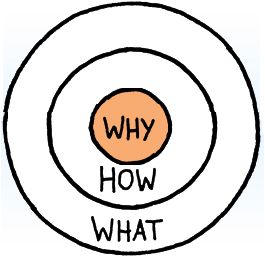
When practicing continuous improvement, the only constant is change. For teams that have achieved moderate, predictable success by following the status quo, embracing this change can require a major paradigm shift. Resistance to change can come in the form of foot-dragging, sabotage, and even rebellion, and can have a toxic influence on your Lean implementation.
As a leader, it’s unlikely that you’ll be able to make everyone on your team completely comfortable with change. You’ll first have to identify the causes of their resistance, and find ways to move through them.
From there, you can do your part to minimize discomfort by giving your team opportunities to gain the autonomy, mastery, and purpose they need to stay motivated. Keep reading to learn why people resist change and how to motivate teams to embrace continuous improvement.
Why Employees Resist Change
In her article published by the Harvard Business Review, author and Harvard professor Rosabeth Moss Kanter described 10 reasons people resist change. The reasons range from perceived loss of control to concerns about competence, but they share a common theme: fear. People resist change because they fear what change will mean for the role, reputation, and responsibilities they have worked to achieve.
What if their skills don’t transfer well to the new Lean way of thinking? What if switching to a flow-based system exposes the inefficiency in their existing processes? What will the ripple effect be of the disruption caused by change? How much work will they have to put into implementing continuous improvement before it begins to have a positive impact? What if it never does?
Respect for People
As a leader, you face the challenge of taking your team from a place of fear to a place of vulnerability, where your team is willing to embrace change. These concerns are all valid and should be treated with respect.
Dan Pink’s well-known framework about the “puzzle” of motivation says that employees are motivated by three factors: autonomy, mastery, and purpose. Whether or not your employees had autonomy, mastery, and purpose in their work before Lean was introduced, it’s your role as a leader to help them understand how continuous improvement enables a healthier, more sustainable way of working.
Your team was hired to work in a specific environment, and that environment is now changing. As a Lean leader, it’s your role to demonstrate the Lean concept of respect for people by understanding the discomfort that change can cause.
It’s also your role to create an environment where concerns can be voiced, opinions can be heard, and people can find safety in knowing that they are not alone in feeling uncomfortable — but that the changes will make their jobs and lives easier.
Motivating Teams with Autonomy, Mastery, and Purpose
Autonomy: Encourage Security through Open, Informal Communication
If your team is resisting continuous improvement, it may be due to a fear of loss of control, or autonomy over their work. You might have employees who have built their careers around the “old way”, who worry about what the “new way” might mean for their position on the team.
You might have younger employees whose only experience is working the “old way”, who feel unsettled by an unearthing of everything they know. This, of course, is understandable.
As a leader, there are a few things you can do to ensure that your employees feel a sense of autonomy as they transition into an environment of continuous change. First, foster an open, informal line of communication, where everyone feels free to express their concerns and discuss hurdles they are facing without judgement.
Check in with employees around the coffee machine to make sure they’re feeling empowered to do their best work. Hold frequent standups, where the team can openly discuss work and continuous improvements efforts in one place.
Second, allow for autonomy within the change: Your Lean implementation will not go over well if it feels like command-and-control (and in fact, this goes against what Lean is all about). Invite your team into the planning of your implementation, and leave room for choices within each decision that is made.
Mastery: Celebrate Learning (Not Just Winning)
A second component of Dan Pink’s model for motivation is mastery: the desire to learn and grow. Introducing continuous improvement is like trying to build up a muscle that hasn’t been used in years — it takes time, can be painful in the beginning, and can expose our weaknesses in an uncomfortable way. In order to motivate your team to stick with it, they have to see it as a valuable opportunity for growth, both as a team and as individuals.
To encourage this as a leader, you must work to create an environment where learning — not winning — is celebrated. If someone runs a test that exposes a serious flaw in your process, celebrate it! They just exposed an opportunity to improve. If someone realizes that your team structure doesn’t support your process, celebrate it! This is an opportunity to encourage your team to self-organize in a way that creates the best business outcomes.
Encourage your team to question everything, and share their learnings across the organization. Help your team see how continuous improvement can provide them with far more opportunities for mastery than ever before.
Purpose: Align Around the “Why”
The final element of Pink’s model is purpose — understanding and believing in the “why” behind what you do. Author and motivational speaker Simon Sinek seconds this notion in his famous TED talk, How great leaders inspire action. Sinek explains the concept of the golden circle, which looks like this:

He argues that while most organizations operate from the outside in, the truly inspirational organizations function from the inside out.
“Very, very few people or organizations know why they do what they do. And by “why” I don’t mean “to make a profit.” That’s a result. It’s always a result. By “why,” I mean: What’s your purpose? What’s your cause? What’s your belief? Why does your organization exist? Why do you get out of bed in the morning? And why should anyone care? As a result, the way we think, we act, the way we communicate is from the outside in, it’s obvious. We go from the clearest thing to the fuzziest thing. But the inspired leaders and the inspired organizations — regardless of their size, regardless of their industry — all think, act and communicate from the inside out.”
The same can be argued for teams. If teams can align around a firm understanding of purpose, they can make decisions that support that purpose. This is why it’s critical, as a leader, to share your vision for the team and where continuous improvement could take you. Shine a light on the risk of maintaining the status quo. Break down assumptions about the future of the market. Find stories of other teams who have used continuous improvement to improve collaboration, communication, and talent alignment.
How to Motivate a Team Resisting Continuous Improvement
Twyla Dell writes of motivating employees, “The heart of motivation is to give people what they really want most from work. The more you are able to provide what they want, the more you should expect what you really want, namely: productivity, quality, and service.”
When things change, it’s understandable that employees fear the unknown. Will they still be able to get what they want from their work? As a leader, it’s your job to hear their concerns and demonstrate how continuous improvement will enable them to grow, learn, and find better alignment in their work.




